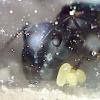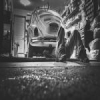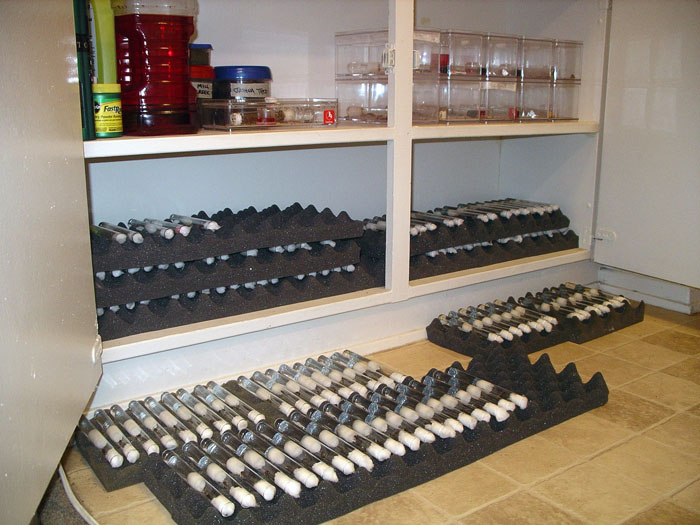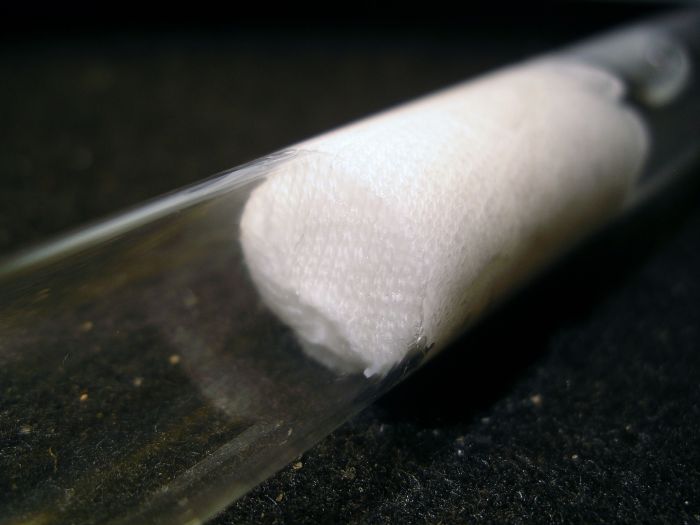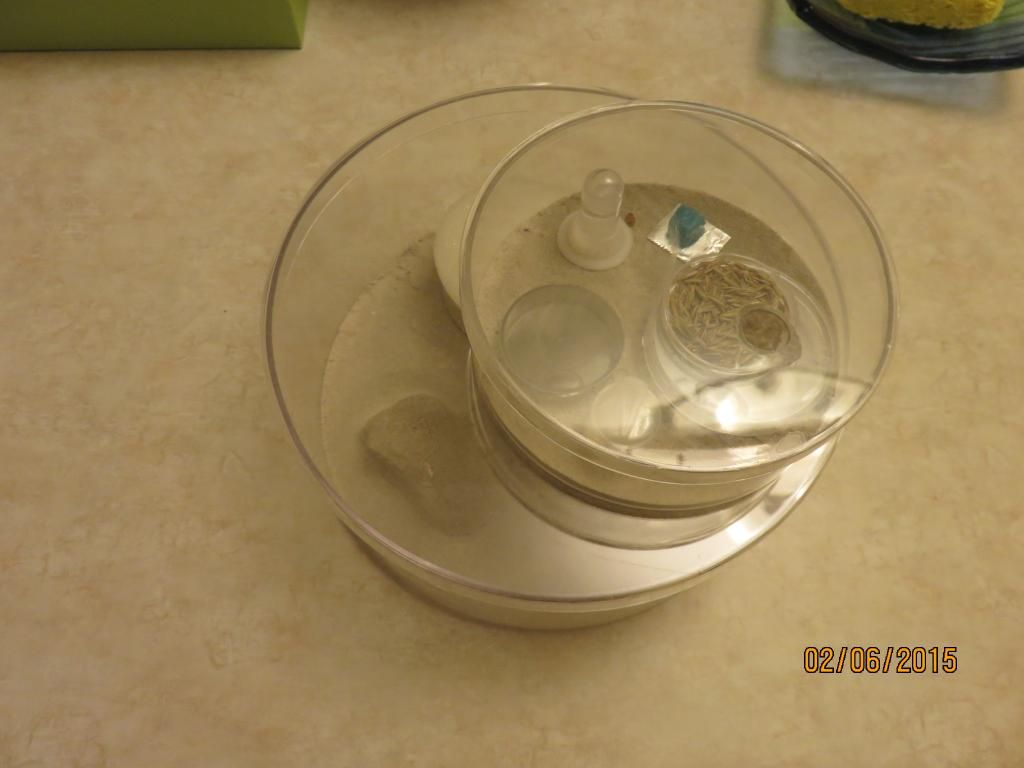This looks like a really good value: http://tarheelants.c...package_1D.html
Foogoo: I'm curious, what species did you have in your growth chamber, and what size was it? Also, what were the light conditions?
Here's my evaluation of test tubes and my review of the Talus, which I wrote some time ago.
I have been keeping ants for about four years, and one of my favorite things to do is to show them off. I have done about a dozen school presentations for area elementary, middle, and high school classes, and my own ants are always the main attraction. I often receive questions regarding how I attain my ant colonies. Historically, I have given the questioner a quick overview of the life cycle of ants and how queen ants found new colonies, and it is at this time that I bring out a test tube with a founding queen and her brood. The viewer may ask about the ant herself and her behavior, but before long, they’ll be asking about the mold on the cotton, the trash pile at the entrance, or the dirtiness of the glass. This is not only embarrassing, but it has made me question how a system that receives almost universal support for being the optimal way to allow queens to found their colonies has such monumental and obvious shortcomings. Over the past year or so, as objections to the practicality and effectiveness of test tubes setups began to surface, I started to look critically at how the test tube setup works... Or more so, how it doesn’t work. Essentially, the only reason a test tube setup allows a queen to found a colony in any way is that it provides moisture and a minimal amount of security. Ants are very hardy creatures, and the toughest of them are going to survive an environment such as a test tube. But just because some survive and found colonies, does not mean that the system is providing optimal conditions or colony growth. Test tubes are prone to molding, which endangers the health of the colony and severely impacts the aesthetics of the setup. They are virtually impossible to feed in, due to their shape and accessibility. They allow some viewing and photography opportunities, but also have limitations in that aspect. The glare and curvature of a test tube’s glass can wreak havoc on the best intentions of a would-be photographer. A test tube also has the added “feature” of a shape that allows for frequent rolling if even minimally bumped. Historically, the test tube has provided a seemingly ideal environment for founding colonies. This method has been adopted by ant keepers and myrmecologists worldwide, with what once seemed to be remarkable success. I, however, challenge the true effectiveness of the test tube setup and the claim that they provide ideal conditions for founding queens and colonies. The summary of my findings and reasons for this conclusion are listed as follows, in no order of importance:
· Proneness to excessive health-threatening (to ants and humans both) mold and fungal growth
· Lack of natural surfaces for cocoon formation, brood resting, and simple traction
· Lack of realistic ability to feed the queen/colony without causing or catalyzing mold growth
· Unsuitable for semi-claustral founding due to lack of separate foraging area and waste storage space
· Poor Aesthetics
· Need to be frequently replaced, causing stress upon the inhabitants in the effort to get a colony to move to a new tube
· Inconsistent sizes and often lack of compatibility with tubing
· Poor conditions for photo and video taking
· Inaccessibility for basic care functions
· Fragility - Can easily be cracked or shattered. Also poses a danger to young children (shards of glass)
· Lack of colonies reaching their full growth potential during their time in a test tube setup
What I see in the Tar Heel Ants’ Talus formicaria is a new alternative to an archaic method of raising ants. The Talus provides a mold-resistant environment that replicates the founding chambers of claustral and semi claustral ant queens. It has a built-in foraging area, allowing feeding of semi-claustral species and fledgling colonies. In addition to this, the Talus provides the backup moisture source of a built in THA water tower, which provides a constant source of water, as do test tubes. Basically, to every issue I have listed above, the Talus has a solution. There is only one con that I can think of with this formicarium - the lack of an external port for hydration. If this was included in the product, then it would face no further criticism by myself. To give it credit, however, a test tube is even more inaccessible in how moisture can be replenished. In short, the Talus allows for easy feeding, cleaning, and viewing of your ants in a safe and healthy environment. I trust Tar Heel Ants and the Talus product with two of my favorite queens, of the species Odontomachus clarus. I would not trust a test tube with these queens and I believe that the investment in proper formicaria is the one thing I wish I would have had the opportunity to take years ago, above all else. I urge each and every ant keeper to give the Talus, Growth Chamber, or Devolve chamber founding products a chance to revolutionize how they keep ants. I am proud to be a supporter of the Talus product and I remain an even firmer critic of the raising of ants in test tubes.
Edited by Miles, March 11 2015 - 6:14 PM.



